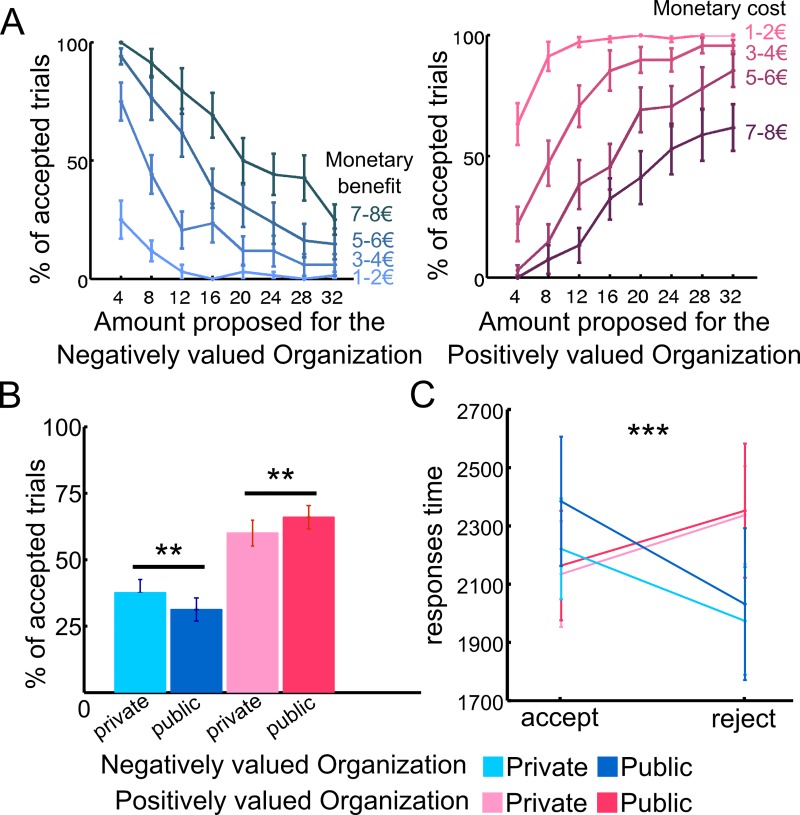Fig 2. Behavioral results.
(A) For the NEG ORG trials, an increase in moral costs (amount potentially transferred to NEG ORG) reduced the likelihood of a transfer being accepted, while potential monetary benefits increased this likelihood. For the POS ORG, an increase in the subject’s monetary cost decreased the likelihood of accepting the offer, while an increase in the moral benefits (POS ORG potential gain) significantly increased the acceptance rate. (B) Effect of audience on accepting offers for both organizations. For the NEG ORG, participants were more likely to accept the offers (i.e., earn money at a moral cost) in private than in public. In the charity condition, individuals were more likely to accept offers (i.e., make prosocial decisions) in public than in private. **p < 0.01. (C) RTs showing interactions between organization types and accept or reject decisions (***p < 0.001), regardless of audience/privacy effect. Participants were faster to accept transfers in the POS ORG condition and to reject them in the NEG ORG condition, suggesting opposite default strategies for the two organizations. See S1 Data. NEG ORG, negatively evaluated organization; POS ORG, positively evaluated organization; RT, response time.

